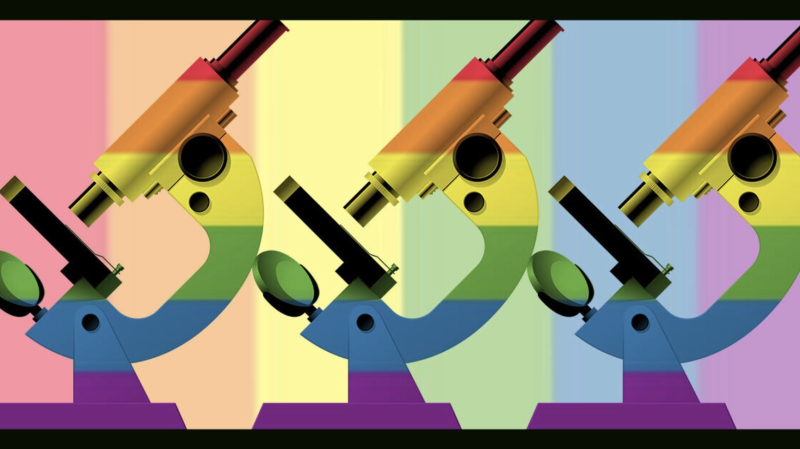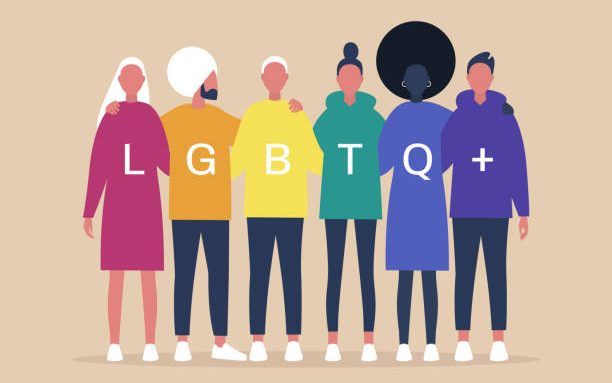
STEM Pride – from bench to rainbow
We are alone
Working in science can be lonely at times. Many say, ‘you are the expert of your own project’. Your thoughts, ideas, and knowledge about the topic, the experiments – failed or eureka, the early mornings, late nights, and weekends you spent pipetting, only you experienced it all. Being queer in academia adds another layer to this loneliness. Look around, where are the LGBTQIA+ people?
I was fortunate that there were seniors in my PhD lab who are openly queer that peripherally helped me embrace my own queerness. But when I was graduating and leaving the lab, the lab’s demographics had become predominantly cis white male. For a long time, I thought gender diversity in a lab can be purposefully curated. But many a times, the hostile elitist environment in academia does not permit the PI to pick and choose – they get who the university recruits; they get whoever comes knocking on their door; they get whoever was recommended by other upper ups. And to maintain a tenured track record, they choose based on one single metric – intellectualism, i.e. someone who can help them be ‘successful’ on paper. Turns out, I was just really lucky and timely to have joined my PhD lab at its maximum queerness.
Beyond culturally contingent stereotypes, I now believe that most human minds have an instinctive need to label those we meet as ‘man’ or ‘women’, period (just two options), to make sense of the world by rearranging the world into arbitrary categories. And this categorization is decided by societal perspectives on whatever that is the most relevant human sex characteristics and gender expression. One may easily assume that among college-educated, graduate school-educated people in STEM, they will be, to some extent, more receptive of radical change and rapid progression. But this unconscious reductionist binary labeling and fitting people into societally gendered boxes has certainly been pervasive and entrenched in STEM, and are still very much existing. Being non-binary, gender non-conforming, queer in STEM is yet another feeling of being a misfit.
Queer representation in STEM is still in the ppm (parts per million) range. I often imagine myself parachuting into the arts, say being a queer dancer (I’m terrible at dancing), will I still feel alone? Being vocal about our gender identities is commonly seen as unprofessional in STEM, and we may run the risk of inviting unnecessary judgements or people not taking us seriously. Navigating the unnerving terrains of being different while wanting our queer community to be represented, I’ve learnt to advocate for myself though I still struggle with the fine balance of being loud, but not too loud and choosing when to be quiet, but not too quiet. To me, being open about my queer identity is opening the doors for others like me to be themselves. It is a way to show people that queerness is more common than they may think. And that we are not alone anymore.

We should not be alone
The tide is slowly turning. Many guidelines and policies have been established to mandate gender balance in academia and ensure that all candidates are assessed equally and without unconscious biases. For example, the European Institute for Gender Equality has devised several guidance and requirements to support gender equality in universities and research organizations. However, one major caveat is that gender diversity is still working on a binary system. Filling up grant applications, enrollment, job applications, or even surveys, it’s still ‘man’ or ‘woman’, or occasionally ‘prefer not to say’. If you fall into the last option, *poof* you no longer exist. Are we even truly represented?
The ability to express yourself freely is as essential to science as it is to the arts. Science is a creative pursue. Generating hypotheses, interpreting and presenting data, designing experiments are the culmination of creative thinking. Only when you are free to express yourself, you don’t have to think about stereotypes of societal standards or opinions, or to be consumed with the conformity to suppress part of yourself in order to participate in the group. And only when you’re able to express yourself freely, you’re able to achieve your peak creativity.
The transformation is lukewarm. We need a shattering of arbitrary divisions (not just gender). But academia is resistant to deviate from societal norms as in many aspects, the connectedness between academia and society cannot be broken. After all, the scientific study of human genetics and heredity was historically intertwined with the social intention of eugenics. Although many of my colleagues have been incredible allies, as an Asian genderqueer person working in a Eurocentric environment, I have experienced certain levels of prejudice and exclusion. These frustrating experiences have motivated me to understand, thus occasionally tolerate, and advocate against the exclusionary practices that exist in academia. Gaining different perspectives of these issues allow me to see that many persistent problems require systemic and radical change. In my smaller social bubble, I have learnt to openly talk about and call out on these issues, though I have to tread lightly at times, as effective ways to improve the inclusivity and the culture that we work in.
While science itself is already hard, I’m hoping for future queers in STEM to have less unnecessary (gendered) roadblocks to overcome. Diversity is what makes science beautiful and evolution possible. Let’s embrace diversity and make STEM a welcoming place for all!
Et cetera
Follow the links below for more voices of the queer community in STEM:
Cell Press collection- LGBTQ+ in science; Elsevier Connect article – On being LGBTQ+ in science – yes it matters, and here’s why; Pride in STEM worldwide; 500 Queer Scientists – a visibility campaign for LGBTQ+ people and their allies working in STEM and STEM-supporting jobs; Global Young Academy featuring LGBTQ+ scientists.
P.S. This is a two-part series by me on LGBTQIA+ related content on KI Researcher Blogs. Find my first post on navigating in this world as a queer person here. Happy PRIDE!
queerioushazel
Queer | Vegan | Scientist studying aging | Exploring writing | Curious about everything

0 comments